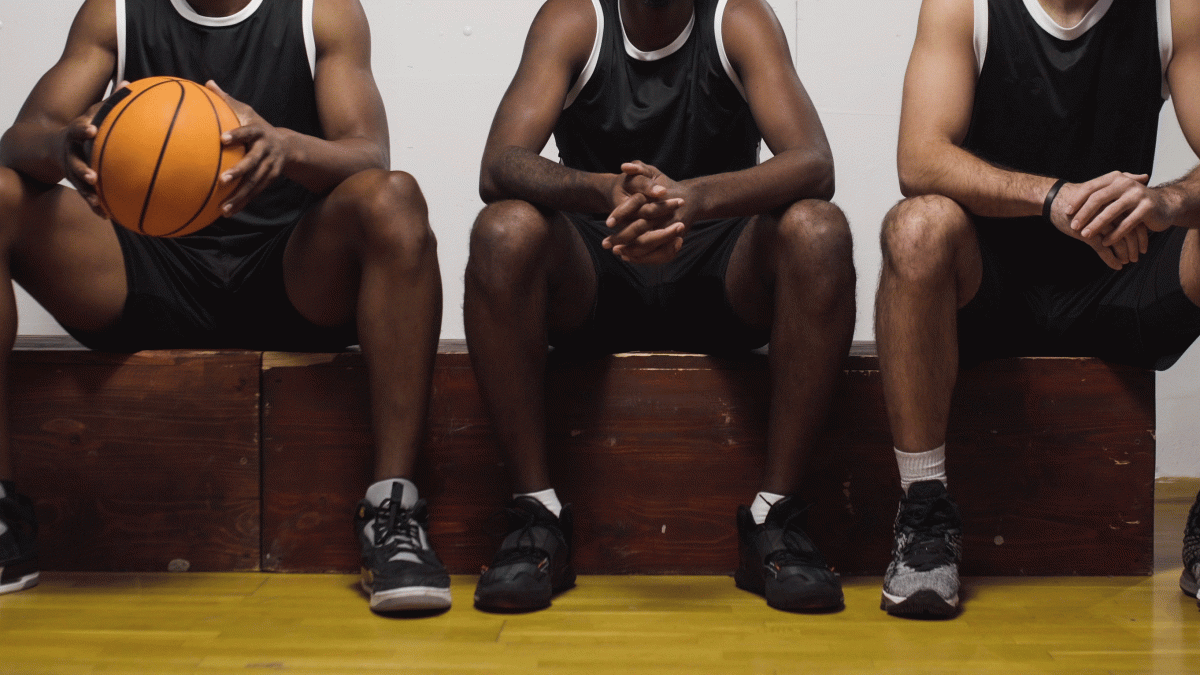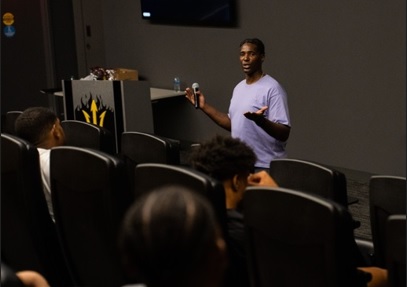Sociology and sports researcher Scott Brooks is no stranger to inequality.
As early as high school, Brooks remembers seeing a few players get more opportunities to stand out on his youth basketball team. They would get more playing time, more support from the team and more chances to score, all of which led to a higher chance of a potential career in the sport. His coach would take players out of the game if players didn’t play according to his expected roles, and teammates would sanction other players who stepped out of line.
“Playing time is earned,” his coach would say. He gave the players sheets with scoring statistics as evidence that performance was directly correlated to playing time. But Brooks didn’t buy it. He decided to investigate further.
Scott Brooks, an associate professor of sociology in ASU's T. Denny Sanford School of Social and Family Dynamics and director of the Global Sport Institute, has authored dozens of research publications, including "Black Men Can’t Shoot," which tells the importance of exposure, networks and opportunities toward earning an athletic scholarship. Photo courtesy the Global Sport Institute
Brooks found that good performance didn’t happen in a silo. It was a team effort, with scoring fueled by the choices of fellow players. “The stats isolated individuals and individual action, but scoring isn’t an individual act; a majority of scores are assisted,” Brooks says. “Plus, team dynamics — the team’s internal hierarchy, relationships and individual interests — affect who scores.”
In addition to disproportionate playing time, Brooks also noticed that young Black men faced a specific type of inequality due to performance expectations, or what he calls “the myth of the natural Black athlete.” Some people believed that Black players’ success was only due to natural ability, which discredited the years of strategizing and network building required to go pro.
These issues sparked a lifelong investigation of the relationship between sports inequality, race and coaching methods. Brooks, an associate professor of sociology in Arizona State University's T. Denny Sanford School of Social and Family Dynamics and director of ASU’s Global Sport Institute (GSI), has authored dozens of research publications, including "Black Men Can’t Shoot," which tells the importance of exposure, networks and opportunities toward earning an athletic scholarship.
In time for Black History Month, we reached out to Brooks to share some of his findings.
Editor's note: Responses have been edited for length and clarity.
Question: How did you become interested in sports inequality?
Answer: I think I’ve always been interested in inequality, and I have loved and played sports since I was 4. I’m the youngest of three boys and I lived inequality when I was too little, too young or not good enough to play with my brothers.
I began sports research my senior year of high school. Like many disillusioned young basketball players with a hoop dream, I thought that my coach didn’t play me enough and didn’t appreciate my skills. Coach gave (star players) more freedom. They were our leading scorers because coach expected them to shoot and expected others not to shoot as much. This investigation is the seed of my current book project — which tackles the question many young athletes (and their parents or guardians) ask coaches: Why don’t they play more?
Q: In what other areas do you see inequality play out in youth sports?
A: Inequality permeates youth sports — for example, sport options vary by gender, some sports are too expensive and we don’t have as many options for youth with disabilities.
At a more micro level, there are inequalities within teams. Sociologists who study small groups have found that hierarchy and stratification are endemic to social life — people sort themselves into categories of status and roles. Sports, as a social institution, is a place where youth learn to sort themselves and others, and common rationale for why someone has higher status than another (they dominate conversations, have more influence and/or they’re taller, stronger, better).
Competitive team sports are as unequal within teams (hierarchy within teams) as they are between teams (school/team differences due to economics, resources, talent and coaching). Youth sports is a pay-for-play model, and those children living with poverty and not playing the “cash sports” (football and men’s basketball) have less options and opportunities to play sports.
Q: In your book “Black Men Can’t Shoot,” you mention the myth of the natural Black athlete. What is this and why is it harmful?
A: There is a popular myth that Blacks, people of African descent, are natural-born athletes. “The proof is in the pudding” — the dominance of Kenyan long-distance runners, Jamaican sprinters and American basketball players are referenced to support this myth. However, race is a social construction.
In “Black Men Can’t Shoot,” I show how young Black men couldn’t rely on natural ability to earn a college athletic scholarship — they had to earn athletic scholarships by strategizing and acting in certain ways to get on teams, get playing time and gain exposure to recruiters, build networks that vouch for their performance and potential, and create new playing opportunities as a result of successfully navigating the youth basketball system.
Three important questions should be asked for those who subscribe to the myth of Blacks' natural athletic superiority: Why do we believe this myth? How does it benefit and cost certain racial and ethnic groups? And how is it used in the service of different groups? These notions and myths have been used to simplistically explain real differences in group outcomes as natural and inevitable, as though skin color, gender or ethnicity determine group outcomes and how people behave.
Q: How do you hope to improve sports equality as director of the Global Sport Institute?
A: I came to ASU five years ago to lead research at the Global Sport Institute. Under Ken Shropshire’s direction, GSI grew from a startup to an established research institute. We are building on this foundation, and under my leadership, we’ll extend our support of diverse sports entrepreneurs and innovation efforts as well as create and support more expansive educational offerings.
Our new strategy is “getting the most out of sport.” Sport is broader than sports participation; it is a growing industry that faces global challenges. GSI studies sports’ global challenges, educates sports’ stakeholders and future workforce and encourages sports entrepreneurship and innovation through thought leadership, outreach, educational programs and partnerships. We have focused on DEI and entrepreneurship, and are adding youth sports to our focus. We will be helping people to get the most out of sport by raising awareness of the careers in sport, preparing the workforce and studying and assisting athletes at every stage.
Q: You’ve previously mentioned community-based sports interventions. What would this look like?
A: There is a great need for thoughtful and inclusive interventions in youth sports. Too many kids are excluded and drop out because sports are no longer fun. Early sports specialization is part of the problem leading to burnout. As well as over-involved parents and under-trained coaches. Interventions are needed to reenergize youth sporting experiences, including indirect participation, like officiating or having kids shadow coaches and sports medicine professionals, or keeping stats or writing sports stories for their school newspapers. We also need to provide incentives for youth sports volunteers to get training. Getting the most out of sport includes ensuring that opportunities and folks' experiences are safe, accessible and equitable.
More Arts, humanities and education

Local traffic boxes get a colorful makeover
A team of Arizona State University students recently helped transform bland, beige traffic boxes in Chandler into colorful works of public art. “It’s amazing,” said ASU student Sarai…

2 ASU professors, alumnus named 2025 Guggenheim Fellows
Two Arizona State University professors and a university alumnus have been named 2025 Guggenheim Fellows.Regents Professor Sir Jonathan Bate, English Professor of Practice Larissa Fasthorse and…

No argument: ASU-led project improves high school students' writing skills
Students in the freshman English class at Phoenix Trevor G. Browne High School often pop the question to teacher Rocio Rivas.No, not that one.This one:“How is this going to help me?”When Rivas…



